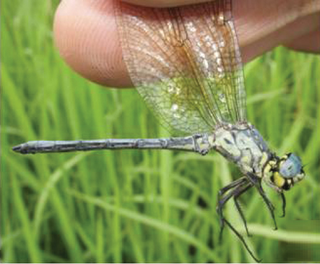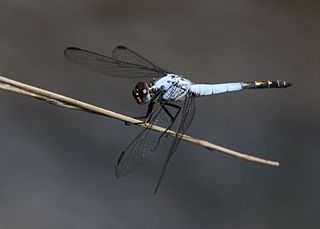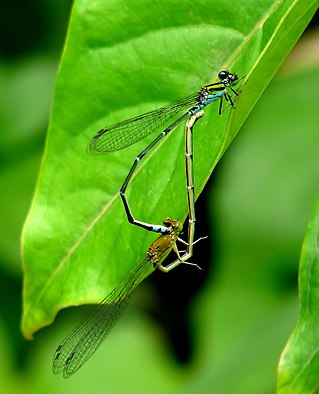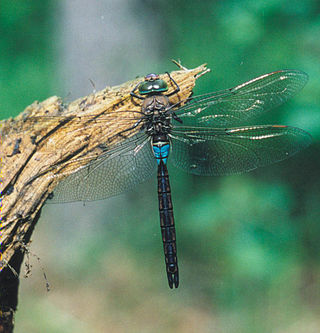
Aciagrion is a genus of damselfly in the family Coenagrionidae. Aciagrion are small and slender damselflies with a small head. They are found at still waters including swamps. Aciagrion is widely distributed in the tropics from Africa, through Indonesia to Australia. They are commonly known as Slims.

Africallagma is a genus of damselfly in the family Coenagrionidae.

Azuragrion is a genus of damselfly in family Coenagrionidae. The genus contains the following species:

Ceriagrion is a genus of damselfly in the family Coenagrionidae. Species of Ceriagrion are small to medium size, generally brightly coloured damselflies. They are found across the Old World, Africa, Asia and Australia.

Chlorocypha is a genus of damselflies in the family Chlorocyphidae.

Gomphidia is a genus of dragonfly in the family Gomphidae. It contains the following species:

Gynacantha is a genus of dragonflies in the family Aeshnidae. The females have two prominent spines under the last abdominal segment. This gives the genus name and the common name two-spined darners; they are also known as duskhawkers.

Micromacromia is a genus of dragonflies in the family Libellulidae.

Nesciothemis is a genus of dragonflies in the family Libellulidae. It contains the following species:

Onychogomphus is a genus of dragonflies in the family Gomphidae. They are commonly known as pincertails.

Paragomphus is a genus of dragonfly in the family Gomphidae. They are commonly known as hooktails.

Phyllomacromia a large genus of dragonflies in the family Macromiidae. They are commonly known as cruisers.
Platycypha auripes, also known as Tanzania jewel, is a species of damselfly in the family Chlorocyphidae. It is endemic to the Eastern Arc Mountains in Tanzania. It occurs in and around forest streams. It is threatened by habitat loss caused by agriculture and wood extraction.

Platycypha caligata, the dancing jewel, is a species of damselfly in the family Chlorocyphidae. It is found in eastern, central and southern Africa from Ethiopia to Angola and South Africa. Its natural habitats include shady parts of subtropical or tropical streams and rivers in forest, woodland, savanna, and shrubland, and shorelines of lakes.
Platycypha lacustris, also known as forest jewel, is a species of damselfly in the family Chlorocyphidae. It is found in forest of Sub-Saharan Africa in Cameroon, the Democratic Republic of the Congo, Kenya, Tanzania, Uganda, and Zambia. Its lives around rainforest streams. It is a widespread species that can be threatened by habitat loss.

Prodasineura, the Asian threadtails, is a genus of damselflies in the family Platycnemididae. All the Afrotropical species formerly in this genus are now placed in Elattoneura, the African threadtails. Dijkstra et al. (2014) moved the genus from Protoneuridae to Platycnemididae based on molecular phylogenetic research.

Pseudagrion is the largest genus of damselfly in the family Coenagrionidae, with over 140 species. Its range includes most of Africa, much of Asia, and Australia. Africa holds most of the diversity with almost 100 species. It has occupied most of the freshwater habitats in its range, and dominates damselfly communities in habitats as different as desert pools, equatorial rainforests and montane streams.

Zygonyx is a genus of dragonflies in the family Libellulidae. They are commonly known as cascaders because of their preference for living beside waterfalls and flying through the spray. They lay their eggs in wet dangling roots.

Anax is a genus of dragonflies in the family Aeshnidae. It includes species such as the emperor dragonfly, Anax imperator.

Umma is a genus of damselflies belonging to the family Calopterygidae.


















